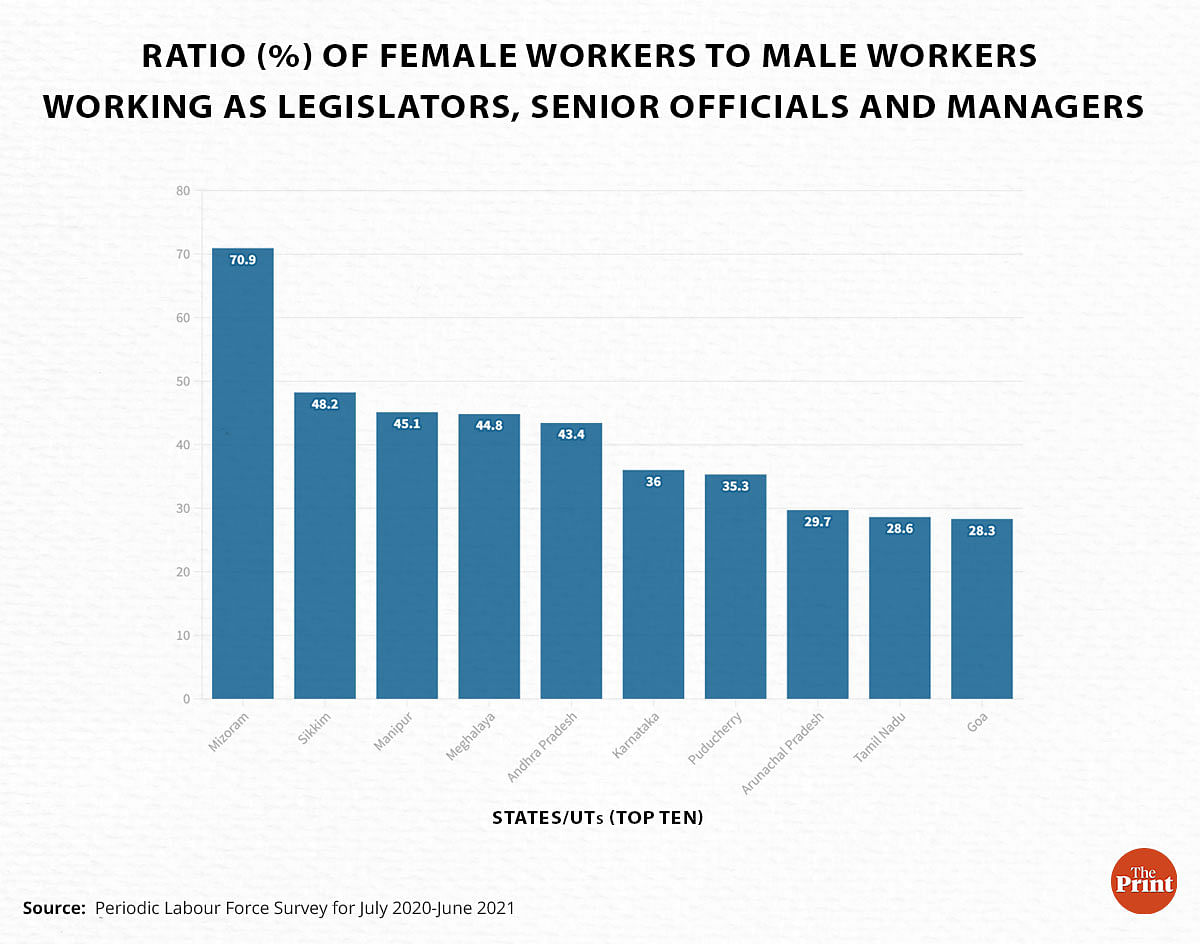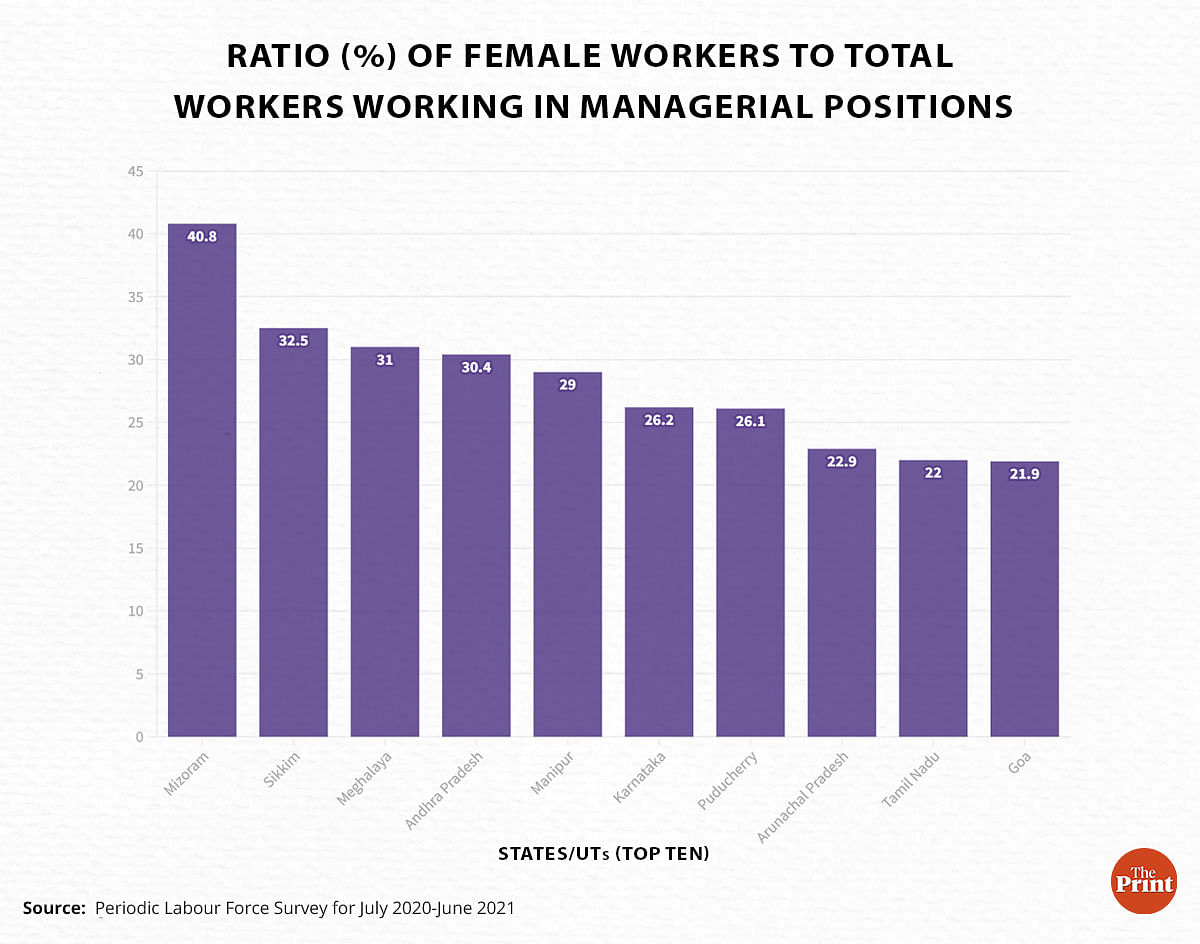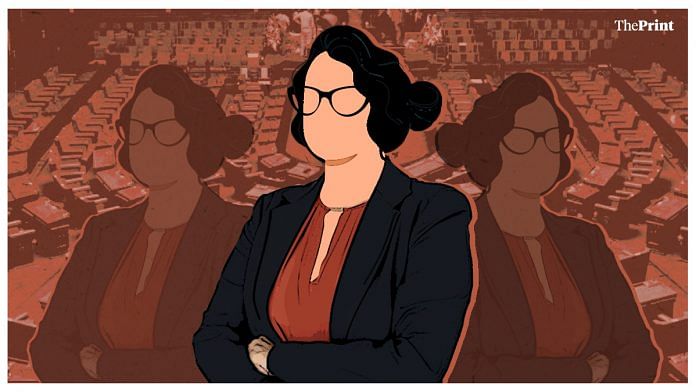Guwahati: Four northeastern states — Mizoram, Sikkim, Manipur, and Meghalaya — have the highest female-to-male ratio vis-a-vis legislators, senior officials and managers, according to the Periodic Labour Force Survey (PLFS) for the period between July 2020 and June 2021 shows.
Released last month, the PLFS survey found that at 70.9 per cent, Mizoram has the highest ratio (measured in percentage) of female-to-male workers who are legislators, senior officials, and managers in the country. Another northeastern state to figure in the top 10 is Arunachal Pradesh.
The International Labour Organisation (ILO) defines “legislators, senior officials and managers” as those who “determine, formulate, direct or advise on government policies as well as those of special-interest organisations, formulate laws, public rules and regulations, represent governments and act on their behalf, oversee the interpretation and implementation of government policies and legislation, or plan, direct, and coordinate the policies and activities of enterprises or organisations, or their internal departments or sections”.
Launched by the National Statistical Office (NSO) in April 2017, the PLFS is aimed at measuring employment and unemployment in the country.

The latest survey shows that five of the top 10 states are from the northeast. The remaining three northeastern states — Assam, Tripura and Nagaland — did poorly by comparison, with the female-to-male ratio below the national average of 22.2 per cent.
A senior official in the Union Ministry of Commerce and Industry who didn’t want to be named told ThePrint that, in Mizoram, the participation of women in the labour force was generally high.
“In Mizoram, there is usually little difference between men and women in both government and private jobs, something which we don’t see in other parts of India,” the official said.
Sandhya Thapa, a professor of sociology at Sikkim University, said although women weren’t traditionally restricted from the public sphere in the state, it wasn’t common to find them occupying such spaces.
It’s policy intervention that’s helped close the gender gap, she said.
“If you really go by the statistics [for women in governance], [Sikkim] has a provision of more than 50 per cent reservation in the panchayat. [Then] there’s 30 per cent reservation in government services,” she told ThePrint.
Also Read: Does development mean more women in work? Yes in Pakistan but not India, says World Bank study
How northeastern states fared
The survey showed that Sikkim (48.2 per cent) has the second-highest ratio of women working as legislators, senior officials, and managers, while Manipur (45.1 per cent) came third and Meghalaya (44.8 per cent) fourth. Arunachal Pradesh (29.7 per cent) came eighth on the list.
Meanwhile, the ratio was 21.1 per cent in Tripura, 16.1 per cent in Assam, and 9.1 per cent in Nagaland, where women have been known to be less likely to hold leadership positions at the grassroots level.
Other states/UTs on the top 10 were Andhra Pradesh (43.4 per cent), Karnataka (36 per cent), Puducherry (35.3 per cent), Tamil Nadu (28.6 per cent), and Goa (28.3 per cent).
The survey shows that Mizoram (40.8 per cent), Sikkim (32.5 per cent), and Meghalaya (31 per cent) also had the highest proportion of female workers working in managerial positions.

So, why have some states fared better than the others? The key perhaps is women’s participation in the workforce.
The official at the Union Ministry of Commerce and Industry quoted above said, in Mizoram, “there’s no difference in treatment of women and men, not just in white-collared jobs but in all kinds of work”.
“Salary packages also tend to be on par,” he said.
This trend holds in both Manipur and Meghalaya.
Nandini Thockchom, an Imphal-based social activist, said: “Women in Manipur, all women, work… they just don’t prefer to be housewives. If they are educated, they will work in the office, and even if they don’t have an education, they will work in the market or make clothes on the handloom.”
Bidhan Laishram, associate professor at Zakir Hussain College in Imphal, said that, culturally and historically, the public sphere in Manipur — including office spaces — has been open to women in general.
“The public space belonging exclusively to males is not known to the Manipuri culture. Office spaces are generally understood as public spaces and women [here] have access to them,” he said. “Historically, also, you see women have played an active role in fighting against colonial occupation in Manipur. So, education has generally been encouraged [here].”
Shillong Times editor Patricia Mukhim said that women in Meghalaya were “economically and socially mobile”. “Nobody stops them from doing what they need to do to earn a livelihood,” she added. “It’s quite liberal that way.”
Despite this, she believes the ground scenario remains grim.
“You have four female legislators in a house of 60 now [in Meghalaya]. You’ve never had anything beyond that number,” she said. “If you say we’re doing better than many other states, then the other states are far worse. Patriarchy is still so dominant in politics.”
(Edited by Uttara Ramaswamy)
Also Read: Covid cut Indian women out of job market, now 90% aren’t in workforce






